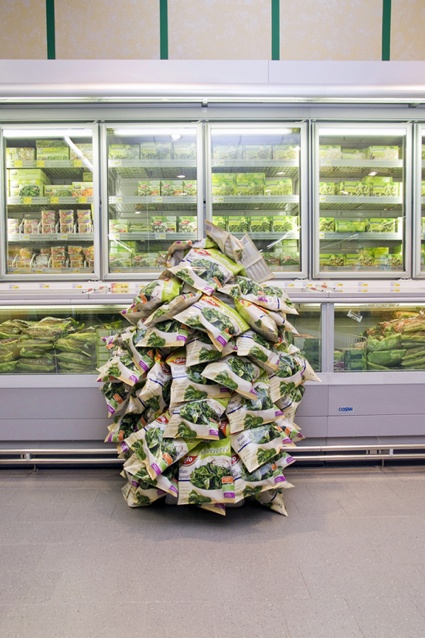 Sabine Keric and Yvonne Bayer, Urban Camouflage
Sabine Keric and Yvonne Bayer, Urban Camouflage
I’m just back from a few days at accès)s(, the festival of digital culture in Pau. It was packed with good ideas and i’ll definitely blog more about it next week (or the one after considering that i still have to publish reports of events i attended in September!) but right now i need to decypher the grubby notes i took during the talk that artist and researcher Benjamin Gaulon gave on Sunday. It was a fun one and should provide you with some inspiration for your Christmas shopping chores.
The focus of his presentation was Retail poisoning , a term directly inspired by the strategies of torrent poisoning used by the entertainment industry to hack into p2p networks.
Retail poisoning is a disruption of consumerism that injects critical actions into the market. The methods of attacks are similar to those used by anti-piracy organisations to prevent file sharing of copyrighted content.
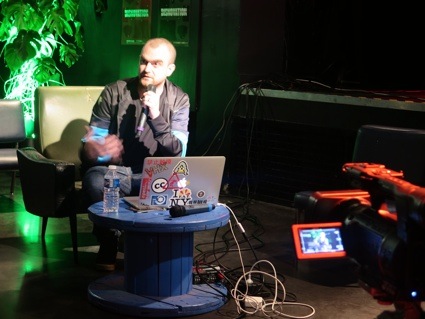 Benjamin Gaulon at the festival accès)s(
Benjamin Gaulon at the festival accès)s(
Gaulon gave lots of examples for each strategy and you can see all of them on the video of his talk. I’ve selected only a couple of them for these notes:
1. Decoy insertion (or content pollution) is a method by which corrupted versions of a particular file are inserted into the network.
Examples:
Cildo Meireles modified Coca-Cola glass bottles. When empty they look ordinary, but political statements printed on the glass in white are revealed as the bottles are filled with the brown liquid. They range from ‘Yankees Go Home’ to instructions on how to make a Molotov cocktail. The empty bottles with the messages were then recycled back into the Coca-Cola distribution system.
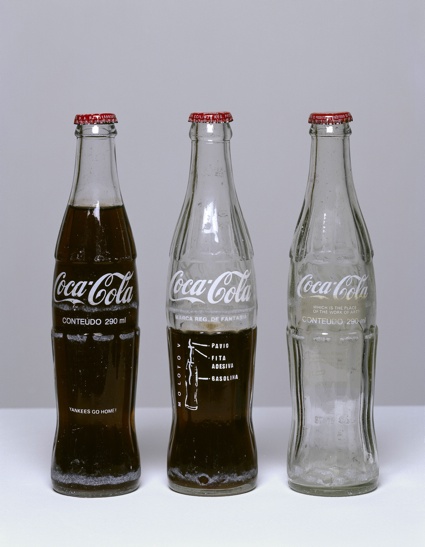 Cildo Miereles, Insertions into Ideological Circuits: Coca-Cola Project 1970. © Cildo Meireles
Cildo Miereles, Insertions into Ideological Circuits: Coca-Cola Project 1970. © Cildo Meireles
The Barbie Liberation Organization swapped the voice boxes on hundreds of talking G.I. Joes and Barbie dolls. The BLO then returned the toys to the shelves of stores, an action they refer to as shopgiving.
Barbie Liberation Organization, 1993
John Osorio-Buck buys stuffed animals in thrift stores and then dissects and reassembles them to make new creatures. The new animals are then placed back onto the shelves of the thrift store.
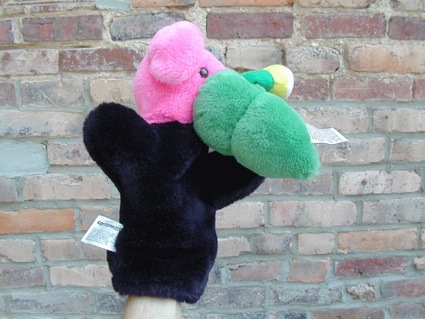 John Osorio-Buck, Catch and Release
John Osorio-Buck, Catch and Release
Provoked by the offer of a pedometer with the Go Active! Happy Meal at McDonald’s, the Meat Helmet by SWAMP Meat Helmet is an exercise machine that forces you to chew until you have consumed the amount of calories contained in your fast food meal.
SWAMP, Meat Helmet
For Urban Camouflage, Sabine Keric and Yvonne Bayer wore Ghillie-style camouflage suits to mimic common goods bought in supermarkets.
Sabine Keric and Yvonne Bayer, Urban Camouflage #4
Antoine Lejolivet and Paul Souviron of Encastrable take self-assigned ‘residencies’ in DIY and gardening stores where they build temporary sculptures
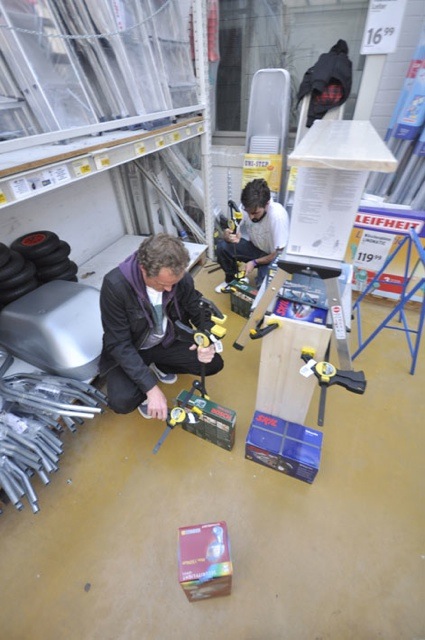 Encastrable, Résidence 11
Encastrable, Résidence 11
 Encastrable, Résidence 10
Encastrable, Résidence 10
Benjamin Gaulon went to Apple stores, downloaded the Corrupt.desktop app and installed it on the computers to glitch the desktop image of the monitors.
Corrupt.desktop [Apple Store Chicago] @gli.tc/h festival
2. Index poisoning makes search difficult for users of the p2p network.
Examples:
Banksy doctored 500 copies of Paris Hilton’s debut album in 42 record shops across the UK, filling it with his own remixes and changing her portraits in an action that questions the vapidity and idiocy of celebrity culture.
Banksy, The Punking of Paris Hilton, 2006
Dumb Starbucks is “a parody about the power of corporate branding” as well as an exploration of the concept of parody law. According to Nathan Fielder, the law “allows you to use trademarks and copyrighted material as long as you’re making fun of them.”
Nathan Fielder, Dumb Starbucks, 2014
3. Spoofing: companies that disrupt p2p file sharing on behalf of content providers build their own software in order to launch attacks.
Examples:
Without asking for the store permission, Bad Beuys Entertainment shot a ‘sictom’ inside the IKEA showroom.
Sictom épisode 2_Bad Beuys Entertainment
Re-code.com, a collaboration between Conglomco and The Carbon Defense League, is a barcode database and web-based application that enables customers to “name their own price for the products they want to buy.”
Re-code.com on CNN
A Mannequin Mob entered the 5th Avenue Gap in Manhattan dressed in white spandex Morphsuits and posed as mannequins. Gap security called 911. The police handcuffed many performers, but eventually allowed them to leave the store.
Improv’ Everywhere, The Mannequin Mob
In July 2009, IOCOSE and friends offered the Søkkømb guillotine kit to the customers of IKEA.
IOCOSE and friends, Søkkømb, IKEA, Barcelona
4. Interdiction prevents distributors from serving users and thus slows P2P file sharing.
Examples:
The Buy Nothing Day launched by adbusters in 1992 as an international day of protest against consumerism.
Reverend Billy and his Church of Stop Shopping.
Just ask yourself: What would Jesus buy?
Reverend Billy’s Church of Stop Shopping performs a credit card exorcism
Artist The Vacuum Cleaner and accomplices invade supermarkets and proceed to walk around the aisle pushing empty shopping trolleys.
The Vacuum Cleaner, Whirl-Mart Ritual Resistance
Evan Roth, Available Online for Free stickers:
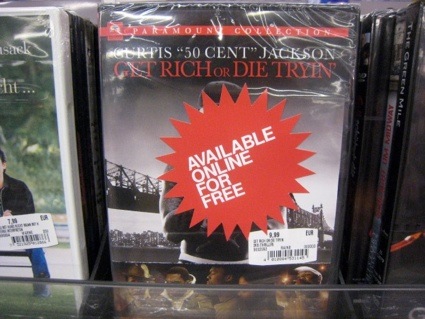 5. Eclipse attack (aka routing-table poisoning) targets requesting peers directly by taking over a peer’s routing table so that they are unable to communicate with any other peer except the attacker.
5. Eclipse attack (aka routing-table poisoning) targets requesting peers directly by taking over a peer’s routing table so that they are unable to communicate with any other peer except the attacker.
Examples:
GWEI (a system that uses google ads to eventually buy the whole company) and Amazon Noir (an automatic algorithm allowing you to download a whole book from amazon ). Two of my favourite projects ever. Both by UBERMORGEN.COM, Alessandro Ludovico and Paolo Cirio
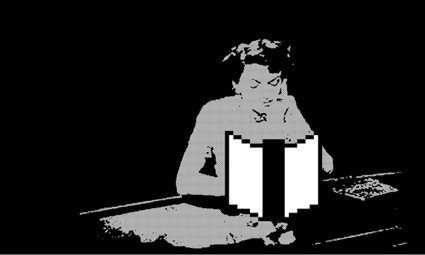 Amazon Noir
Amazon Noir
Darius Kazemi made a bot that randomly buys items for him on Amazon. Similarly, the Random Darknet Shopper, by Mediengruppe Bitnik, is an automated online shopping bot which uses a budget of $100 in Bitcoins per week to randomly buy an item on Darknet.
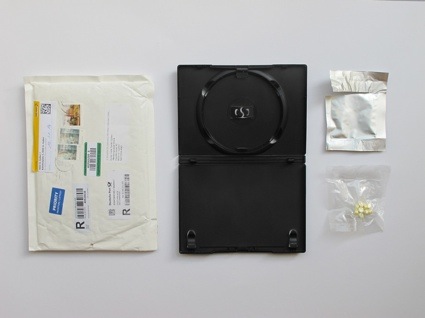 Mediengruppe Bitnik, Random Darknet Shopper, 2014
Mediengruppe Bitnik, Random Darknet Shopper, 2014
Photographer Alexis Jemus multiplied himself in an IKEA in Montreal, creating an eerie army of Jemuses inside the Street View virtualization of the store.
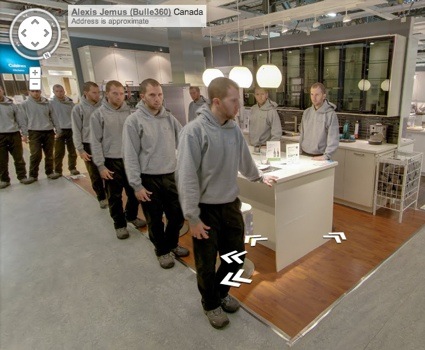 Alexis Jemus, 2014
Alexis Jemus, 2014
Far more examples in the tumblr archive. Don’t hesitate to contact Benjamin if you know of any practice of retail poisoning that hasn’t been mentioned on the tumblr yet.
The accès)s( conference is over but you can still visit the exhibition Disnovation at Le Bel Ordinaire until 6 December 2014.
